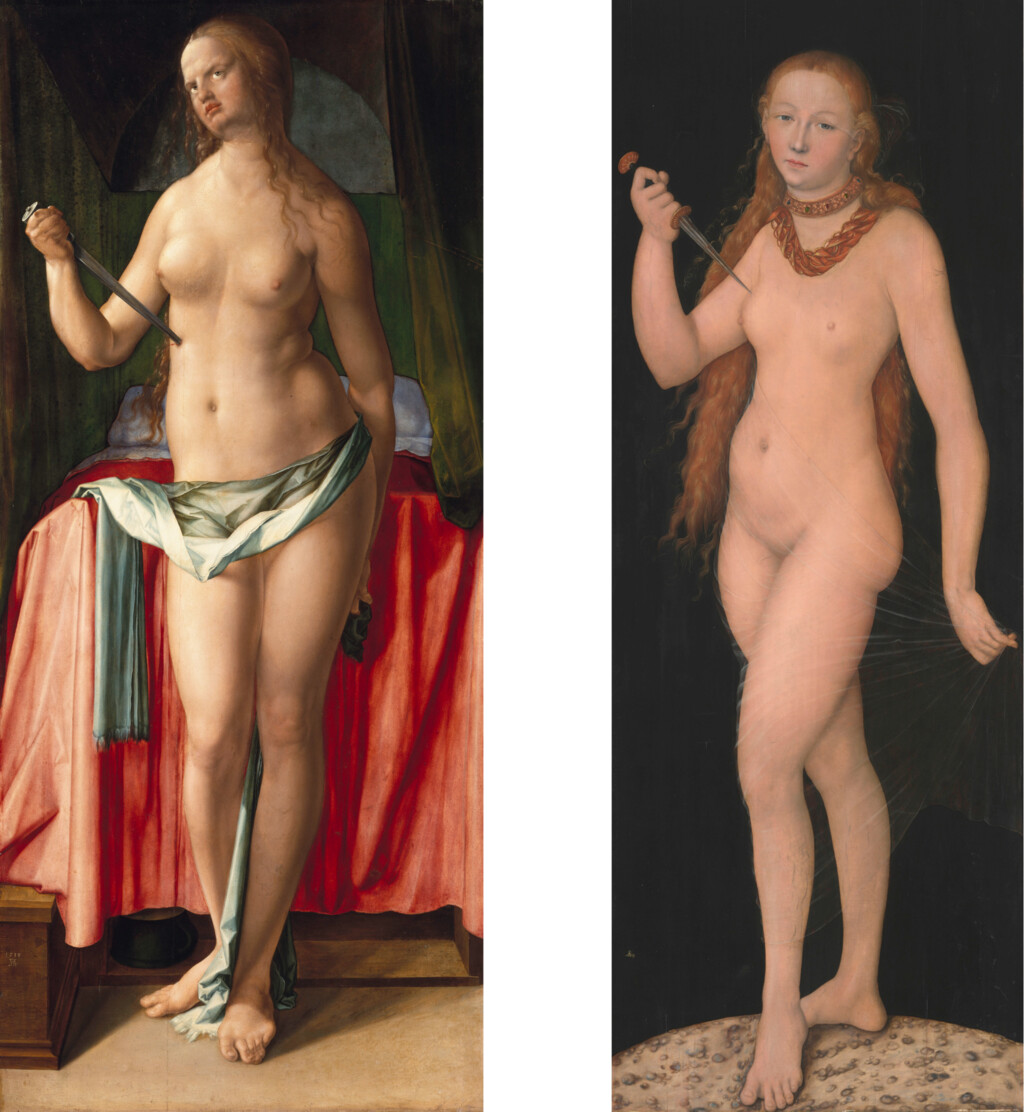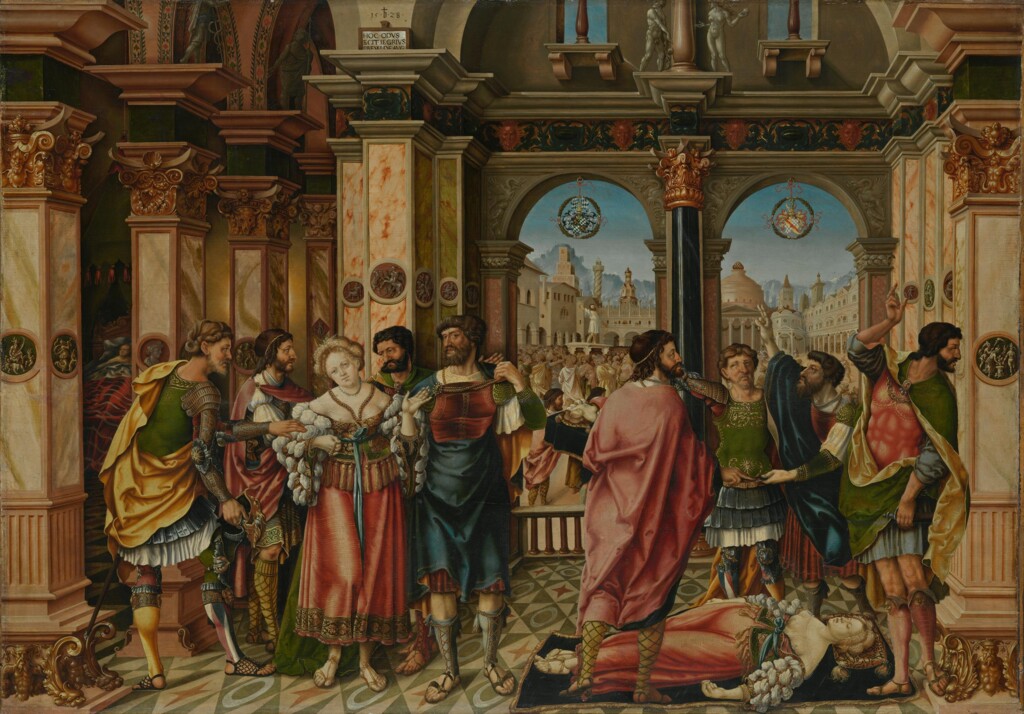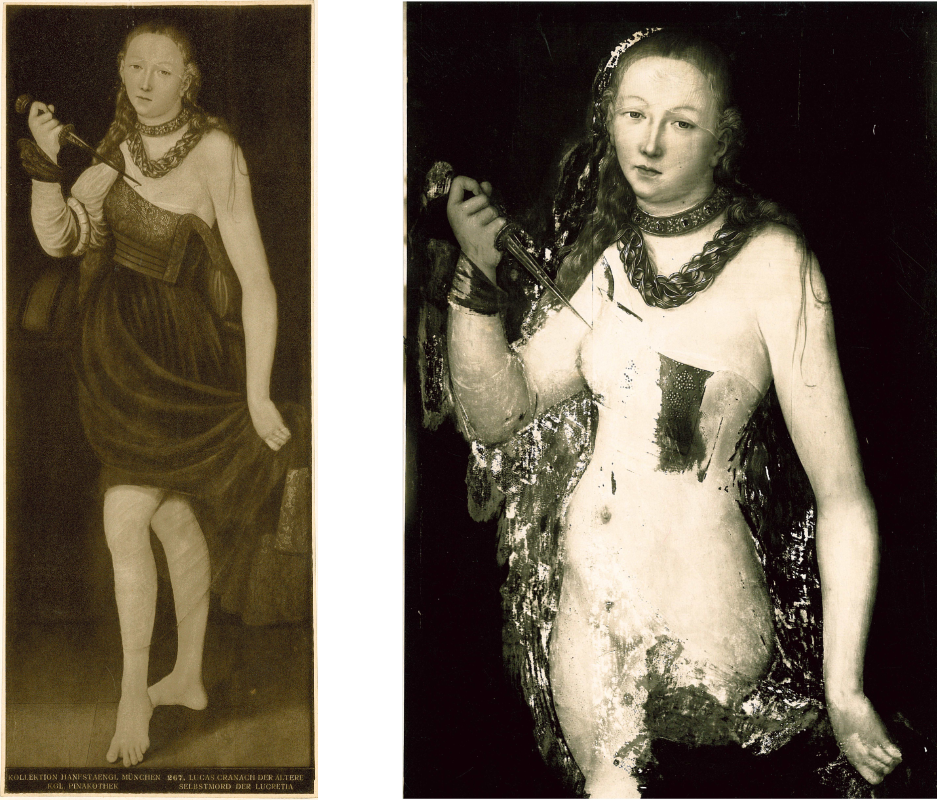ALL EYES ON highlights a work or group of works, a significant artist personality or artistic position, guest appearances by individual loans, important restorations, or new acquisitions in the midst of the gallery. The artistic as well as technical qualities of the paintings, their content and significance, their history of creation and impact, and their creators are illuminated in the context of the collection. This opens up new, current perspectives and diverse insights into the research work at the Bayerische Staatsgemäldesammlungen.
The tragic fate of Lucretia, who let herself be raped to save her family's honour and then commits suicide, was seen as a symbol of female virtue in the 16th century.
Albrecht Dürer and Lucas Cranach the Elder reduced the story to the life-size nude figure and thus utilised the humanist pictorial theme to depict sensual eroticism. In the 17th century, both paintings were optically "toned down" and presented together in Munich - apparently perceptions had changed in the meantime and demanded adjustments.
The presentation tells the unusual story of the two paintings and invites visitors to explore the very contemporary question of the conditions under which depictions of nudity are considered acceptable, inappropriate or offensive.


